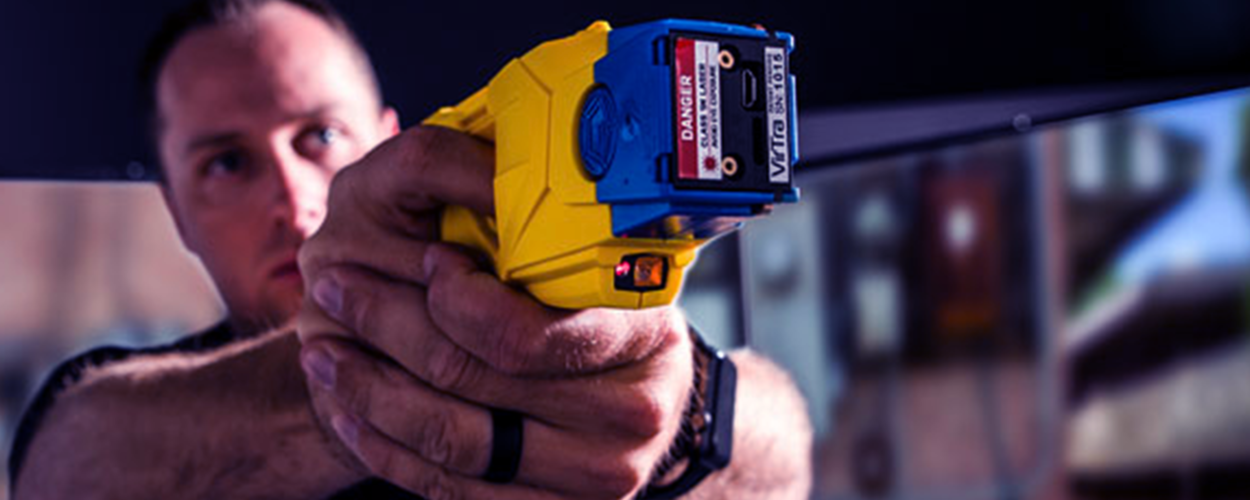
You get sent to a disorderly subject complaint in the parking lot of a local bar. Upon arrival, you observe rather large, intoxicated person yelling at a number of different people, challenging them to try and fight him. He sees you and quite pointedly challenges you to try to take him into custody. You determine that the best course of action is to use your electronic control weapon (ECW) in an attempt to get this person to cooperate.
You are within deployment distance, so you draw your ECW and start making the appropriate commands at the subject. Not only does he simply laugh you off, but he suddenly pulls out a large hunting knife from his rear waistband. Before you know it, he starts walking toward you in an aggressive manner. As you start to move off the “X,” you need to do a number of things in quick succession: Create distance, keep an eye on the subject and transition from ECW to firearm. Do you holster the ECW before unholstering your firearm? Do you drop it on the ground and draw your gun? Do you stick with the ECW against the knife? Have you practiced holstering up your ECW and transitioning to another option?
These types of situations, where an officer must move up or down in their use of force choices happens all the time. Unfortunately, many times use of force training focuses on a single force option. Officers will go through a training event where they will only be faced with a situation where they select an option, such as their handgun, and keep it out for the entirety of the training.
Officers need to be proficient with use of force transitions. In order to meet this proficiency, there are two specific areas that need to be trained: Recognizing when you should transition and properly transition from one item to another.
In an attempt to help with meeting these training needs, VirTra has developed a scenario to address these transitions. The scenario “Weapon Transition” has a number of different subjects that can appear with various threat levels. These subjects are all dressed the same and move the same, in an attempt to force the officer to simply focus on the actions that the subject takes.
When a subject in the scenario performs a certain action, the officer will have to determine if they should be escalating or de-escalating in the choice of control. This scenario covers both training needs (recognizing the need to transition, and actually performing the transition) in a single run through. With the multiple different subjects and actions they perform, officers can train multiple times without seeing the same situation twice. For instructors, this offers a high number of repetitions for the officers, with almost no downtime.
With the ability to play back the officer’s training session through our TMaR system, instructors can debrief the officer on how well they transitioned, and if the transition was appropriate. Video playback of an officer’s performance is invaluable since they can actually see what may need to be improved, or what they are doing right, instead of simply relying on an instructor’s feedback.
Remember, it’s not IF you’ll have to transition when interacting with someone, it’s WHEN you’ll have to do it, and how quickly you recognize the need to transition and how smoothly you perform it.
Stay safe!
Written by:
TJ Alioto
VirTra Law Enforcement Subject Matter Expert
Retired Peace Officer – Wauwatosa PD (WI)
Recently Published
Join Our Newsletter







